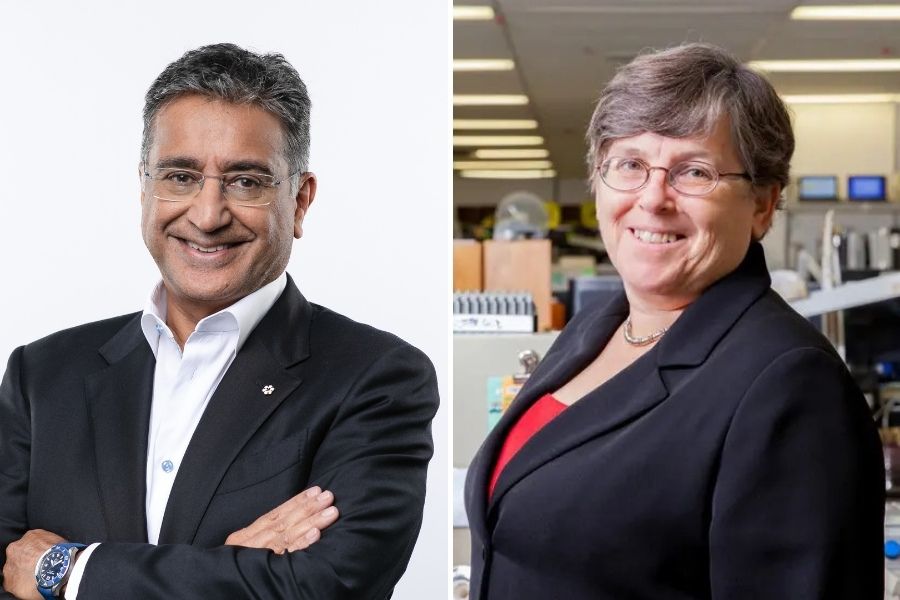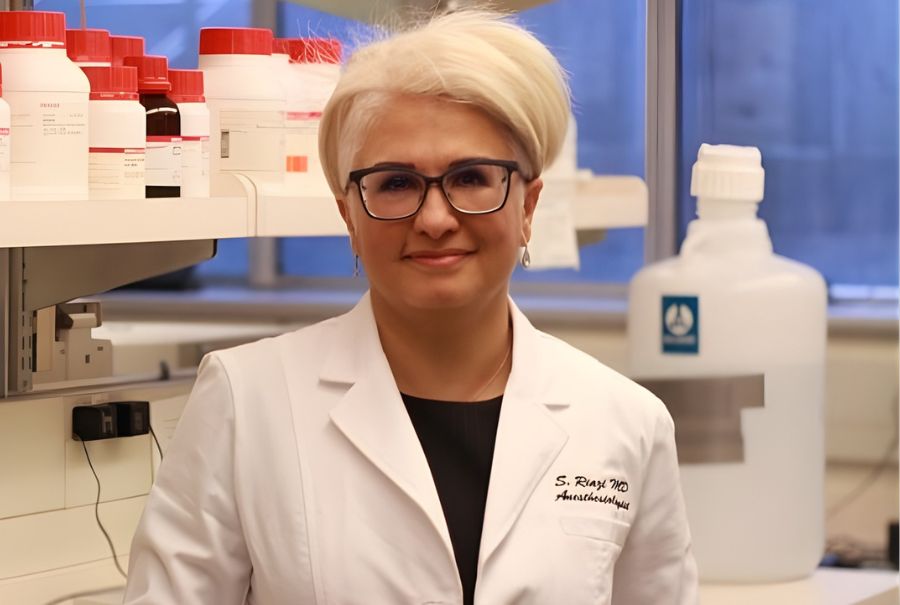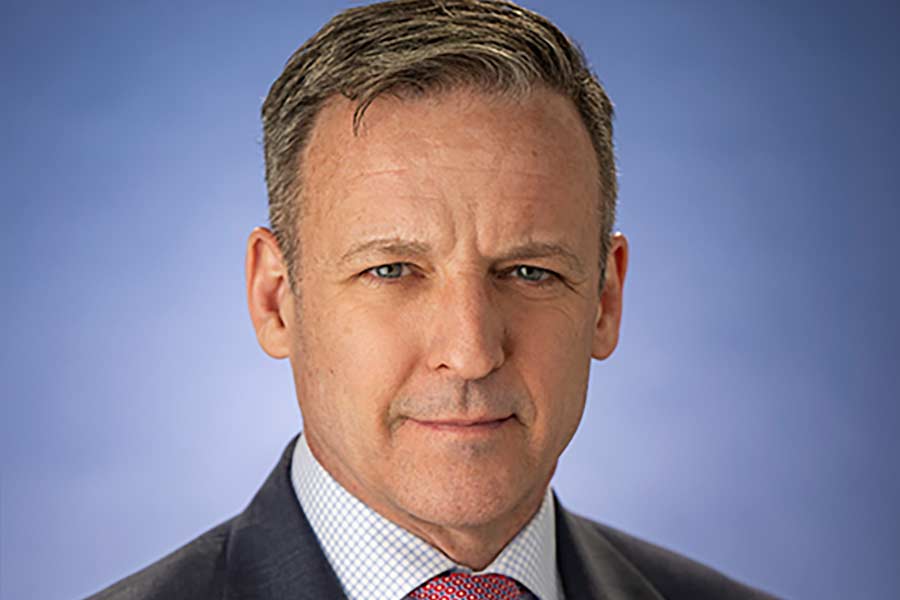“As the pandemic unfolded, the work we do and the method of research behind it became part of mainstream media reporting,” writes Dr. Beate Sander. “Canadians now know our work is essential to, and intertwined with, good healthcare practice.” (Photo: Juan Mosquera Urueña)
By Dr. Beate Sander
For years I’ve been fairly certain that a pandemic will occur in my lifetime. The optimist in me always hoped not. The scientist in me knew otherwise. So, on Wednesday, March 11, 2020, when the pandemic was declared, I was not surprised.
But – even for me – the extent of what we are experiencing with the spread of COVID-19 is beyond what I could have imagined.
Another surprise has been how markedly my work has changed in the last 22 months. I went from having one, to two full-time jobs. And, I created the second job!
Two days after the World Health Organization (WHO) declared the pandemic, I was sitting in my office with Dr. Raphael Ximenes, one of my postdoctoral fellows at Toronto General Hospital Research Institute (TGHRI), talking about COVID. We asked ourselves, how might this virus play out in Ontario? And, as modellers, we asked, what could we focus on to inform Ontario public health policy?
As our conversation deepened, we reflected on the alarming TV news images coming out of Italy showing the dire effects on patients of the lack of ventilators and overrun hospital Intensive Care Units (ICUs). Could what was happening in Italy happen here?
Those newscasts certainly added urgency to our conversations.
We called in Stephen Mac, one of my PhD students, who had done modelling for another project that we thought might be helpful. Then we brought in Dr. Kali Barrett, another one of my students, who is also a UHN critical care physician, and Dr. David Naimark one of my long-time modelling colleagues. We kept challenging ourselves: what modelling would be most useful? What are the important questions for Ontarians? And, how quickly could we generate our predictions?
We knew time was of the essence.
“The pace of our modelling work has been a revelation. We had to learn to adapt to the insatiable demand for knowledge.”
– Dr. Beate Sander
The news from Italy kept coming up in our conversation. And then it struck us how we could contribute. By Saturday, March 14, we started modelling to predict ICU use for Ontario. We took into account the Italian case trajectory, the South Korean situation, which had done really well at that time, and a third one – something in between. That’s how it all started.
By Wednesday, March 18, one week after the WHO declaration, we had a one-page forecast with bullet points. We shared our modelling with UHN leadership, the Ontario Ministry of Health (MOH), Public Health Ontario, and via a website we created, the COVID-19 Modelling Collaborative.
We had received no directives. We just did it.
And it’s naïve to think now, but we wondered if anyone would notice.
That notion was quickly extinguished. Within 24 hours CBC TV’s The National was calling for an interview. The headline was pretty stark: Hospitals scramble to secure more ventilators amid coronavirus outbreak.
Within weeks of our one-page brief, the Ontario Modelling Consensus Table (MCT) was established. I was one of the inaugural members and have been co-chair since Summer 2020. Through the MCT, we established a framework for members to access MOH data to support modelling teams across the province, and in turn provide model predictions to Ontario government agencies and the public through our partnership with the Science Table.
One of the MCT’s guiding principles has been consensus. This is critically important. First, because of the impact and gravity of decision-making in a pandemic. We also knew no single model should inform policy given the substantial uncertainty. Each team approaches the same question, but often conceptualizes and structures a model differently. So even for the exact same scenarios, predictions will differ, and then usually there are a range of “what if” questions, i.e. scenarios of interest. To arrive at consensus requires context expertise in modelling as well as the Ontario situation across many domains. I believe this consensus approach has been critical to why the Ontario MCT has been so successful.
Over time, the modelling process both at MCT and the COVID-19 Modelling Collaborative team became more refined and we expanded the range of questions and “what ifs” to examine. We benefited greatly from being a diverse and collaborative team that grew to include social scientists, mathematicians, epidemiologists, healthcare workers, and public servants.
The pace of our modelling work has been a revelation. We had to learn to adapt to the insatiable demand for knowledge.
As researchers, prior to the pandemic, we were used to taking months and years to gather data, analyze trends, and present findings. For nearly two years now, that research timeline was been compressed into weeks and days. The speed of modelling, while maintaining rigorous scientific standards, has been key in providing timely insight. It is critical to Ontario planning public health action at a time of great uncertainty and urgency. We will deliver a forecast and oftentimes within days the government is reacting to our modelling with new or revised protocols.
Of course, the biggest fear hanging over us about working so fast is what if we are wrong? To this day, we feel the gravity of every model we deliver. Public health action informed by the model predictions affects every Ontarian. Thank goodness for our years of training and experience to provide the modelling along with insightful interpretation and context. And, working in multidisciplinary teams has never been more important. The work is very rewarding. We know providing this type of modelling evidence informs decisions that impact the pandemic trajectory in a positive way. That helps make things better. And above all – helps save lives.
No question I have felt the pressure. Borne out of a feeling of the weight of our responsibility. All of us doing this modelling are volunteers. And, we share a profound sense of responsibility to decision-makers, to the many stakeholders, and the people of Ontario.
“Of course, the biggest fear hanging over us about working so fast is what if we are wrong? To this day, we feel the gravity of every model we deliver. Public health action informed by the model predictions affects every Ontarian.”
– Dr. Beate Sander
If there is a positive in all this, I am grateful for the fact that we have raised the profile of the science of modelling. As the pandemic unfolded the work we do and the method of research behind it became part of mainstream media reporting. Canadians now know our work is essential to, and intertwined with, good healthcare practice.
My day job is in the field of health economics, where we assess the value of a health intervention, and evaluate whether it provides good value for taxpayer dollars. We use a mix of simulation modelling and real-world data analysis. With modelling, we can figure out whether, and under which conditions, an intervention could work in real life. And we analyze real-world big data to inform the simulation models. In fact, as if to foreshadow what was to come, just months before the spread of COVID-19, I actually gave a talk at UHN about the potential fallout of a pandemic.
The worldwide spread of COVID-19 exposed our lack of preparedness, highlighting the need for more investment in pandemic preparedness and disease prevention to preserve and protect public health. One cannot separate public health and the economy. They go together. If the population is not healthy, then the economy doesn’t work either. Until now, there hasn’t been much funding into pandemic preparedness research, nor to build capacity to do this type of work when it’s needed. We were not prepared for this pandemic. We’ve been doing many things on the fly, in real time. Learning as we go.
Modelling is vital to help us anticipate the future. And, we already see research that indicates there WILL be another pandemic. We don’t know when. And, we don’t know the extent of it. My one hope is that we will be better prepared. That work has already begun. Because I for one am determined to not let the lessons of the COVID-19 pandemic be forgotten.


